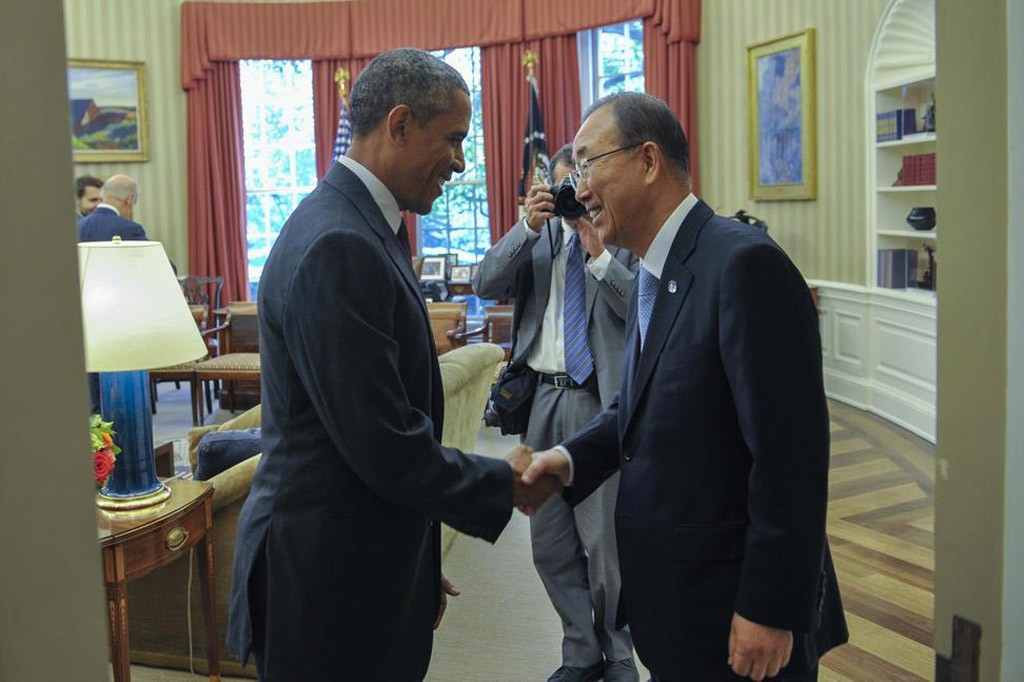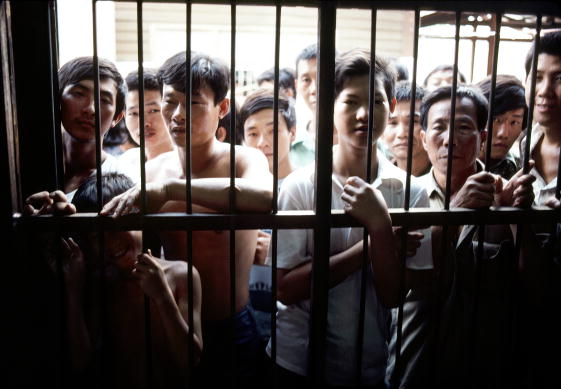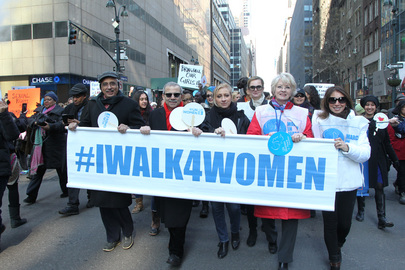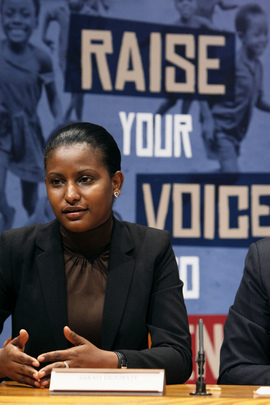3.3 The Status of Human Rights in the United States
The Status of Human Rights in the United States
While human rights have in large part been internationalized, they have to be implemented at the domestic level. According to Donnelly (2003), this dichotomy permits countries to fulfill dual and seemingly incompatible roles: essential protector and principle violator. In the United States, this duality can be seen in the difference between the laws upon which the country was founded and the implementation of these laws in an equitable fashion.
The Bill of Rights, as codified in the United States Constitution, lays out specific human rights that parallel those to which the majority of international human rights regimes adhere. Thus, the founding myths of this country are grounded in the central place of human rights (Donnelly, 2003). In fact, many if not most liberal democracies share these constitutive principles. As Koopmans (2012) points out, “internal constitutive principles – such as the right to exercise one’s religion…imply that the granting of rights to individuals and groups will be more similar across democracies than it will be between them and non-democracies” (p 25). And yet, there remain significant areas where United States domestic policy can be seen to violate various rights of various portions of the population at any given time.
 Original Bill of Rights, United States.
Original Bill of Rights, United States.
Archives.org – public domain.
Political Issues
The most pressing human rights issues in the United States revolve around immigrant and refugee families. The strategic priorities outlined by the UNHCR include: (a) countering discrimination; (b) combating impunity and strengthening accountability; (c) pursing economic, social and cultural rights and combating poverty; (d) protecting human rights in the context of migration; (e) protecting human rights during armed conflict, violence and insecurity; and (f) strengthening international human rights mechanisms and the progressive development of international human rights law. Priorities (a), (c) and (d) make up the elements most germane to the human rights situation in the United States today. The difficulties faced by immigrant and refugee families include classism, racism, sexism, and discrimination on the basis of religion as well as uncertain economic circumstances.
 Secretary-General of the United Nations, Ban Ki-moon, meets President of the United States, Barack Obama.
Secretary-General of the United Nations, Ban Ki-moon, meets President of the United States, Barack Obama.
UN.org – public domain.
The United States voted in favor of the UDHR but it did not ratify (i.e., sign) the document. While various theories attempt to explain relevant reasons, numerous rights enshrined in the UDHR are in the Constitution and Bill of Rights (AHR; Advocates for Human Rights, n.d.) The United States’ apparent sense of exceptionalism to international standards and norms has been evidenced over time in two main ways: the ongoing torture of Guantanamo Bay detainees and the revelation that American social scientists were involved in reverse engineering torture techniques for the government. While the United States may at times act outside of the limitations established by the international community (and specifically the UDHR) this stance is not the focus of this chapter. As the UNCHR notes, “national and local politicians have sought to mobilize electoral support by promoting xenophobic sentiments, exaggerating the negative impact of hosting refugees while ignoring the fact that refugees can actually attract international assistance and investment to an area, creating new jobs and trading opportunities” (2006, p 32). In this way the refugee situation has often been used as a political football in United States political culture.
Video
Ruben Parra-Cardona, Ph.D., LMFT discusses discrimination and systemic issues affecting Latino immigrants in the United States (6:30-9:19).
Legal Issues
The current legal climate in the United States is negatively skewed against international human rights, particularly as it pertains to the legal status of displaced persons (persons who are forced to leave their home country due to war, persecution or natural disasters). There are many reasons to be pessimistic about successfully using international human rights arguments as a way of advancing displaced person’s rights in the United States (Chilton, 2014; Cole, 2006; ICHR; International Council on Human Rights, 2008). According to Cole (2006), in spite of its history as a nation of immigrants, the United States remains deeply nationalist and quite parochial; the law reflects that parochialism. Furthermore, “International human rights arguments are often seen as the advocates’ last refuge pulled out only when there is no other authority to cite” (Cole, 2006, p. 628).
 Poster entitled, “It is our right to seek and enjoy in other countries asylum from persecution.”
Poster entitled, “It is our right to seek and enjoy in other countries asylum from persecution.”
UN Photo – public domain.
However, this trend seems to be moving the national towards the transnational in terms of how human rights law is perceived and implemented in the legal system and culture of the United States. This means that increased globalization and interdependence has had the effect of strengthening the influence of international human rights standards in the United States. The hope is that these standards may “command greater respect from our own domestic institutions” (Cole, 2006, p 643). Cole further posits that the paradigm shift in the United States from national to transnational, merging the national and the international, parallels the shift in the United States from state to federal power that occurred with the advent of the New Deal in the 1930s. In other words, there is reason to hope that gradual change is coming within the legal system in the United States with regards to its acceptance of the international human rights regimes norms and standards.
Refugee families and asylum seekers. The terms of refugee and asylum seeker are often used interchangeably, but there are important legal differences between them. These differences not only determine which resources they are eligible for once arriving in the United States, but also in which phase of the legal process they are currently.
 Refugees and displaced persons in South-East Asia; Cambodia, Vietnam, and Laos.
Refugees and displaced persons in South-East Asia; Cambodia, Vietnam, and Laos.
United Nations Photo – Coping with Disaster – CC BY-NC-ND 2.0.
Refugees. An estimated 51.2 million people were displaced since 2013 as a direct result of persecution, war, violence, and human rights atrocities (UNHCR, 2018). In 2017, USCIS received 139,801 affirmative asylum applications and the EOIR received 119,303 defensive asylum applications, but only 26,568 applications were approved (DHS, 2019). The remaining applications were abandoned (1,439), withdrawn (6,400), or simply unaccounted for (11,391). Being that the recent United States population estimate is 318 million people, refugees make up less than 1% of the population. The families seeking asylum from their home countries often have significant traumatic histories and thus can loom larger in the public sphere than other types of immigrants. Most of these families are fleeing extreme injustices in their home country, such as war, political instability, genocide and severe oppression. Because of the uncertainty of their original situation, it remains quite difficult for the Department of Homeland Security (DHS) to determine who is legitimately eligible for asylum.
Asylum seekers. A further complication for government agencies lies in trying to determine when and how to return rejected asylum seekers to their home countries (Koser 2007). Within the domain of international migration studies there has been traditionally a differentiation made between refugees (involuntary migration) and labor seekers (voluntary migration). While the former group represents the political outcome of global systems and interactions and the latter group represents the economic outcome, nonetheless, it is quite clear that people migrate for a whole complex series of reasons, including social ones (Koser, 2007). If an asylum-seeker’s claim for asylum is denied, they are placed in deportation proceedings. During this process, an immigration judge (IJ) works with the asylum-seekers’ attorney to determine the removal process. It is important to note that displaced persons are rarely detained and/or immediately placed on the next flight to their country of origin.
Women and Children’s Rights
The UNHCR has, within the last decade, specifically recognized gender as a fundamental human rights issue. The policy on refugee women is based on the recognition that becoming a refugee affects men and women differently: “… even where there is no armed conflict, women and children continue to be subject to serious human rights violations resulting from discrimination and/or violence against them due to their gender…” (Zeiss Stange, Oyster, & Sloan, 2012). Many of the human rights issues that involve women and children obviously impact families in a very deep way. This category of violation stems from historical perceptions of women and children as property or “chattel.”
 International Women’s Day March for Gender Equality and Women’s Rights.
International Women’s Day March for Gender Equality and Women’s Rights.
UN Photo – public domain.
Domestic violence. The issue of domestic violence, for example, is one that disproportionately affects women and children. In immigrant families from more patriarchal societies, the home is still considered the woman’s domain whereas earning is considered the man’s, even when both work for pay outside the home. This particular division of labor can increase the power imbalance in these relationships, which can create a setting within which domestic violence may be more likely to occur (Perilla, 1999). This imbalance can become particularly problematic when the power hierarchy between parents and children is inverted once they arrive to the United States. Since wage-earning immigrant women often gain autonomy and greater gender equity, while men tend to lose ground, this adds further threats to male self-esteem that is already being eroded by classism, racism and legal status (Mahler & Pessar, 2006).
Children’s issues. Children are disproportionately impacted in other ways as well. Children of displaced families, asylum-seekers in particular, are more likely to be without health insurance and have less access to public programs across nationalities (Blewett, Johnson, & Mach, 2010). This is due to their legal designation of being persons who are ineligible for public services (i.e., health insurance). The literature suggests that traumatic events impact each family member regardless of whether they were directly or indirectly exposed. This is important because traumatic stress, loss and grief extend beyond individual family members and influence the entire family (Nickerson, Bryant, Brooks, Silove, Steel, & Chen, 2011). Detention and deportation in particular pull families apart and make it much more difficult for parents and other caregivers to access necessary resources for their children. This is true for many immigrant families because there are many different legal statuses within families due to, for example, children being born to undocumented parents in the United States. Thus the tendency is for these families to be more careful and anxious about seeking out services that they might qualify for because of the fear of being reported to immigration authorities.
Female genital mutilation. Female genital mutilation (FGM), also known as female genital cutting, is a human rights issue of growing importance due to the increasing number of refugees arriving in the United States from East and West Africa. This practice, sometimes also known as female circumcision, is a long-standing cultural tradition in some communities. Although FGM is generally practiced in Muslim communities, there is no actual religious mandate for it (Cook, Dickens, & Fathalla, 2002). While the practice is deeply cultural, it is illegal in many African nations. However, regardless of legality, the practice is widespread. Fatima, for example, from the opening story, told the first author, “The president’s daughter has been circumcised – how will he enforce this law? Are they going to put him in jail? Hah!” (Personal communication, 2011).
 Angélique Kidio and Concer Sponsors Brief on Efforts to End FGM.
Angélique Kidio and Concer Sponsors Brief on Efforts to End FGM.
UN Photo – public domain.
According to Mather and Feldman-Jacobs (2015), over 500,000 girls and women have undergone genital mutilation in the United States. FGM is regarded as a human rights issue for women because it can cause severe health sequelae. Even though the family of the child may consent to the procedure, this does not make it a legal practice as consenting to a physical mutilation can never be legal (Cook, et al., 2002) However, recommendations include more education and counseling of women as opposed to the firmer application of the law in cases like these. This practice remains illegal in the United States, which may have the effect of pushing those refugees wishing to practice this even further underground. In other words, shame and stigma often accompany FGM. And though it can be presented as a convincing claim for asylum in the United States, many women do not feel comfortable doing so and instead pursue other means (USCIS; United States Citizenship and Immigration Services, 2019).
In 2012, the United Nations issued an interagency resolution calling for the elimination of FGM worldwide. The resolution states unequivocally that “seen from a human rights perspective, the practice reflects deep-rooted inequality between the sexes, and constitutes an extreme form of discrimination against women” (WHO; World Health Organization, n.d.). The hope is that this ban will speed the process of eliminating this dangerous and painful practice worldwide.
Video
This video discusses the border crisis and children separated from their families (0:00-7:06).
Sex Trafficking and Human Trafficking
The United Nations Protocol to Prevent, Suppress, and Punish Trafficking in Persons, Especially Women and Children, defines trafficking as the “…recruitment, transfer, harboring or receipt of persons, by any means of threat or force…for the purpose of exploitation.” This crime is globally categorized as either sex trafficking or labor trafficking. According to the DOJ (2006), there have been an estimated 100,000 to 150,000 sex trafficking victims in the United States since 2001. Furthermore, estimates of persons currently in situations of forced labor or sexual servitude in the United States range from 40,000 to 50,000.
The leading countries of origin for foreign victims in fiscal year (FY) 2011 were Mexico, Philippines, Thailand, Guatemala, Honduras, and India (DOJ, 2012). In 2011, “notable prosecutions included those of sex and labor traffickers who used threats of deportation, violence, and sexual abuse to compel young, undocumented Central American women and girls into hostess jobs and forced prostitution in bars and nightclubs on Long Island, New York” (DOS, 2012). According to the International Labor Organization (ILO, 2019), globally an estimated 4.5 million women, men, and children are sexually exploited. While there is some legal benefit (a self-petitioned visa in the United States) in place for those who cooperate in prosecuting their traffickers; with this visa victims can receive four years of legal status. Unfortunately, far fewer receive immigration aid than are identified as victims of sex trafficking, (DOS, 2012).
Human trafficking is another area where issues of physical safety and sexual exploitation of immigrant and refugee women and children come to the forefront as a human rights issue. Contrary to popular thought, sex trafficking is an ongoing and insidious activity that also includes young boys, and the prevalence of human and sex trafficking in the United States disproportionately affects the more vulnerable, under-resourced populations such as immigrant and refugee families (DOS, 2012).
Mixed Status (Deportation) and Separation of Families
One of the most pressing human rights issues for displaced persons in the United States today is the mixed-status families (i.e., documented and undocumented). These are families whose members hold different levels of legal status in the country. Some members of the family may be documented persons (such as asylum-seeker, permanent resident or citizen) while others have undocumented status. Though the children born to undocumented migrants typically receive citizenship by birth, this does not change their parents’ legal status. The exception, however, is when undocumented parents return to their country of origin and wait until that child is 18 years of age; at that point the young adult child can sponsor them in becoming United States citizens. When families consist of members whose legal status is documented as well as undocumented, this uncertain distal context can set the stage for significant vulnerabilities within the family.
Brabeck and Xu (2010), who studied of the effects of detention and deportation on children of Latino/a immigrants, found that the legal vulnerability of Latino/a parents, as measured by immigration status and detention and deportation experience, predicted child well-being. In other words, the children suffer when they cannot be sure whether their parents will be able to stay and live with them in United States on a day-to-day basis. Kanstroom (2010) writes that although “international law recognizes the power of the state to deport noncitizens, international human rights law has also long recognized the importance of procedural regularity, family unity, and proportionality. When such norms are violated the State may well be obligated to provide a remedy” (p. 222). Once again the paradox of international human rights norms conflicting with the actual social and political practices of the United States; as of this writing the issue remains a political football in the United States.
Detention Without Trial
In 2011, United States Congress passed the National Defense Authorization Act (NDAA) that codified, for the first time since the McCarthy era, indefinite detention without charge or trial. Subjecting refugees to detention induces unnecessary psychological fear and harm. Furthermore, it does not uphold the fundamental human rights principles set out in the ICCPR preamble (Prasow, 2012). The notion that people, whether citizens, documented or undocumented immigrants, could be held by the government indefinitely without access to the protections enshrined in the United States Constitution is a clear violation of international human rights law and anathema to human rights and civil liberties groups. As of late 2012, members of Congress proposed to have it repealed or amended. As noted by Senator Dianne Feinstein of California, “Just think of it. If someone is of the wrong race and they are in a place where there is a terrorist attack, they could be picked up, they could be held without charge or trial for month after month, year after year. That is wrong” (Prasow, 2012). The amendment that Senator Feinstein proposed, however, would protect only citizens and lawful residents; undocumented immigrants would still be subject to this odious practice.

